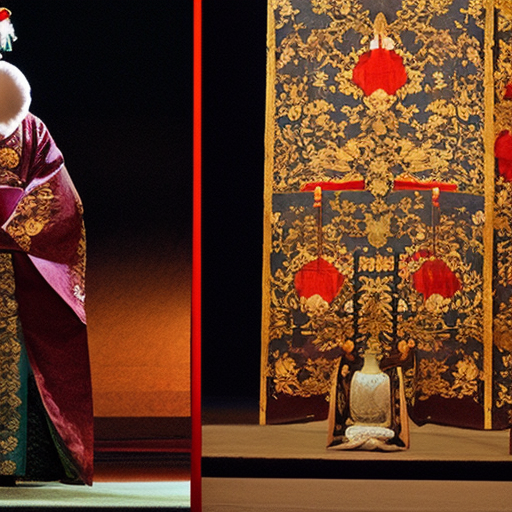Noh Theater: A Traditional Japanese Performing Art
Noh theater, also known as Nohgaku or simply Noh, is a traditional form of Japanese theater that has been performed for over 600 years. It combines elements of drama, music, and dance to create a unique and highly stylized art form. Noh plays are characterized by their slow and deliberate movements, poetic language, and intricate costumes and masks. This summary will explore the history, elements, and significance of Noh theater.
History of Noh Theater
Noh theater originated in the 14th century and was developed by Kan’ami and his son Zeami. Kan’ami was a performer in the Sarugaku theater, a popular form of entertainment at the time. He incorporated elements of Sarugaku, as well as other traditional Japanese performing arts, to create Noh. Zeami, his son, further refined the art form and wrote many of the most famous Noh plays.
Noh theater gained popularity during the Muromachi period (1336-1573) and became the official entertainment of the samurai class. It was performed in the courts of feudal lords and at religious ceremonies. Today, Noh theater is still performed in Japan and has also gained international recognition.
Elements of Noh Theater
Noh theater is characterized by several key elements. The first is the use of masks, which are worn by the actors to represent different characters. These masks are carved from wood and are highly detailed, often depicting supernatural beings or historical figures. The masks help to convey the emotions and personalities of the characters.
Another important element of Noh theater is the use of music and chant. The actors, accompanied by a small orchestra, sing and chant throughout the performance. The music is played on traditional instruments such as the flute, drums, and stringed instruments. The chanting and music add depth and atmosphere to the plays.
The movements in Noh theater are slow and deliberate, with each gesture and step carefully choreographed. The actors use a stylized form of movement called “yūgen,” which emphasizes grace and elegance. This deliberate and controlled movement adds to the overall aesthetic of Noh theater.
Types of Noh Plays
There are several different types of Noh plays, each with its own characteristics and themes. The most common type is the “god play” (kami mono), which focuses on supernatural beings and deities. These plays often explore themes of spirituality and the afterlife.
Another type of Noh play is the “warrior play” (shura mono), which depicts historical events and famous warriors. These plays often feature intense battle scenes and explore themes of loyalty and honor.
The “woman play” (kazura mono) is another popular type of Noh play. These plays focus on female characters and often explore themes of love, loss, and sacrifice.
Significance of Noh Theater
Noh theater holds great cultural and historical significance in Japan. It is considered one of the three major classical Japanese theater forms, along with Kabuki and Bunraku. Noh theater has been recognized by UNESCO as an intangible cultural heritage of humanity.
Noh plays often convey deep philosophical and spiritual themes, exploring concepts such as the transience of life, the nature of beauty, and the cycle of birth and death. The slow and meditative nature of Noh theater allows the audience to reflect on these themes and contemplate the human condition.
In addition to its artistic and cultural significance, Noh theater also has a strong influence on other art forms. It has inspired many contemporary theater directors, choreographers, and musicians around the world. Elements of Noh can be seen in modern dance, opera, and even film.
In conclusion, Noh theater is a traditional Japanese performing art that has been cherished for centuries. Its unique blend of drama, music, and dance, combined with its elaborate costumes and masks, create a mesmerizing and profound theatrical experience. Noh theater continues to captivate audiences with its timeless themes and exquisite artistry.












